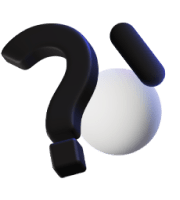In the medical world, trust is everything. Every tool a doctor or surgeon uses must not only be reliable but also traceable to a trusted source. Whether it’s a pair of surgical scissors, a precision scalpel, or a complex laparoscopic device, the reputation of the brand behind these tools is crucial. But how do you ensure no one else misuses your brand name or markets a counterfeit version of your surgical product? The answer lies in securing a trademark under Class 10 — a specific category in trademark law reserved for medical and surgical apparatus.
If you’re a manufacturer, supplier, exporter, or startup in the surgical instruments industry, understanding Class 10 can help you protect your brand and grow your business with confidence. This blog explains everything you need to know about Trademark Class 10 and why it matters for medical device and surgical instrument businesses.
What is Trademark Class 10?
Trademark Class 10, as defined by the Nice Classification (NCL) system used globally for classifying goods and services, covers:
“Surgical, medical, dental and veterinary apparatus and instruments, artificial limbs, eyes and teeth; orthopedic articles; suture materials.“
This means if you deal with the design, manufacturing, or sale of any kind of medical or surgical tools, Class 10 is your trademark category. By filing your trademark in this class, you’re telling the world (and the law) that your brand is associated with these specific types of products.
Why Class 10 Matters for Surgical Instrument Brands
Here’s why Class 10 is critical if you operate in the surgical tools or medical equipment domain:
1. Brand Protection in a Sensitive Industry
Surgical instruments are used in life-saving procedures. Your brand stands for safety, quality, and precision. Unauthorized use or imitation of your brand can be dangerous — not just for your business reputation but for patient health. Registering under Class 10 ensures legal protection from counterfeiters or unauthorized sellers.
2. Avoid Legal Confusion
Trademark law is class-specific. If you don’t register under the right class, others could use a similar name for surgical products and claim they are not infringing. Registering in Class 10 narrows the legal scope and strengthens your case if a dispute arises.
3. Build Customer Trust
A registered trademark shows customers, hospitals, and distributors that your brand is legitimate and protected. This increases buyer confidence, especially in a market where quality and authenticity are non-negotiable.
Products Covered Under Trademark Class 10
Here’s a detailed list of products and tools typically protected under Class 10:
- Surgical scissors, scalpels, forceps
- Syringes, needles, and cannulas
- Diagnostic instruments like stethoscopes and otoscopes
- Suture materials and surgical staples
- Blood pressure monitors and thermometers
- Endoscopic and laparoscopic instruments
- Orthopedic braces and supports
- Prosthetic limbs and artificial joints
- Surgical gloves and gowns (if classified as medical devices)
- Dental instruments like drills, mirrors, and extraction tools
- Hearing aids and pacemakers
- X-ray apparatus and other diagnostic machines (sometimes overlapping with Class 9)
✅ Tip: If your product includes software (e.g., diagnostic software or AI-enabled medical tools), you may also need to consider Trademark Class 9 in addition to Class 10.
What is Not Covered Under Class 10?
It’s important to file your trademark in the correct class. Some items might seem related but fall under different classes:
| Product | Classification |
|---|---|
| Medical software | Class 9 |
| Medical furniture (beds, trolleys) | Class 20 |
| Surgical training manuals or content | Class 41 |
| Retail or wholesale medical services | Class 35 |
| Pharmaceutical products | Class 5 |
If your product falls into more than one category, you can file a multi-class application or file multiple separate applications.
Step-by-Step Guide: How to Register a Trademark Under Class 10
- Trademark Search
- Visit IP India Public Search Tool
- Enter your brand name, filter results under Class 10
- Check for similar or identical trademarks already registered
- Choose a Unique Brand Name
- Avoid generic terms like “Medical Tools” or “Surgical Pro”
- Invented or coined words are more likely to be approved
- Conduct a domain and social media handle availability check as well
- File Your Application
- Submit the TM-A form via the IP India online portal
- Select “Class 10” as your goods classification
- Provide applicant details, logo (if applicable), and product description
- Government Fee Structure (as of 2025)
- Individual/startup/small enterprise: ₹4,500 per class
- Others (e.g., companies): ₹9,000 per class
- Track and Monitor Application
- Once submitted, your application will be examined
- If accepted, it is published in the Trademark Journal for 4 months
- If no objections or oppositions are filed, you receive the registration certificate
- Trademark Validity
- A registered trademark is valid for 10 years
- Can be renewed indefinitely every 10 years
Common Mistakes to Avoid When Filing in Class 10
- Using a generic or descriptive brand name (e.g., “Best Surgical Tools”)
- Filing under the wrong class, such as Class 9 for physical surgical tools
- Skipping the trademark search step
- Not protecting a logo or slogan associated with the brand
- Not renewing the trademark after 10 years
Should You Trademark Just the Name or Also the Logo?
We recommend registering both the wordmark (brand name) and the logo. This provides dual-layer protection:
- Wordmark protects the textual brand name (e.g., “MediSharp”)
- Logo protects the visual design (e.g., specific font or symbol)
You can file both under Class 10 using a separate application for each or combine them in one.
Benefits of Having a Registered Class 10 Trademark
| Benefit | Why It Matters |
|---|---|
| Legal Protection | Prevents others from using similar names |
| Competitive Edge | Builds brand loyalty and trust |
| International Expansion | Helps in filing foreign trademarks via Madrid Protocol |
| Asset Creation | Increases brand valuation for investors or buyers |
| Prevents Domain Squatting | Helps acquire exact-match domains and social handles |
| Helps in Product Authentication | Essential in online marketplaces and hospitals |
Real-World Example
Imagine a small surgical tools manufacturer named “NeuroEdge Instruments” in Mumbai. They produce high-precision neurosurgery tools. Initially, they didn’t register their brand. After seeing counterfeit products labeled “NeuroEdge” on e-commerce platforms, they realized the mistake.
They quickly applied for a trademark under Class 10. Within a few months, they were able to legally issue takedown notices, work with customs to block fake imports, and restore their brand’s credibility with hospitals and clinics.
Final Thoughts
Trademark Class 10 is not just a legal formality — it’s a powerful shield for your medical or surgical equipment brand. Whether you’re a startup or an established supplier, securing your trademark gives you the confidence to innovate, market, and expand your product range without fear of brand misuse. In an industry where precision and trust matter most, your trademark helps you protect both.
Protect Your Brand with VMK Professionals
At VMK Professionals, we specialize in trademark registration for medical and healthcare brands across India. Whether you’re manufacturing surgical tools, exporting medical devices, or creating cutting-edge diagnostic instruments, our expert team can help you file under the correct class, respond to objections, and secure your trademark faster and more affordably.
Why choose VMK Professionals?
✅ End-to-end trademark registration
✅ Expert handling of Class 10 filings
✅ Affordable pricing for startups and small enterprises
✅ PAN India service with dedicated legal advisors
✅ Support for international trademark filing (Madrid Protocol)
👉 Ready to protect your surgical instrument brand?
Contact VMK Professionals today and let’s secure your Class 10 trademark the right way.


